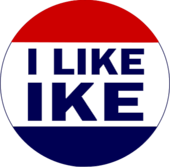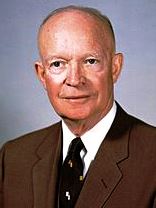» posted on Saturday, August 20th, 2022 by Linda Lou Burton
Politics and Legacies
 Originally published August 14, 2020 by Linda Lou Burton posting about Washington, DC from Little Rock, Arkansas – When asked what they most wanted to see in DC, Kayla answered: the National Air & Space Museum. Sam answered: a Nationals game, I go to a baseball game in every city I visit. My choice was the Capitol, I never tire of seeing it, outside and in. I’ve been going to DC since I was fourteen, back before everything was barricaded and closed to cameras. According to an old scrapbook, I visited the White House on June 14, 1953, when Ike and Mamie lived there, though I have no memory of “politics” then, except for the familiar “I Like Ike” slogan, surely one of the catchiest any candidate has ever had.
Originally published August 14, 2020 by Linda Lou Burton posting about Washington, DC from Little Rock, Arkansas – When asked what they most wanted to see in DC, Kayla answered: the National Air & Space Museum. Sam answered: a Nationals game, I go to a baseball game in every city I visit. My choice was the Capitol, I never tire of seeing it, outside and in. I’ve been going to DC since I was fourteen, back before everything was barricaded and closed to cameras. According to an old scrapbook, I visited the White House on June 14, 1953, when Ike and Mamie lived there, though I have no memory of “politics” then, except for the familiar “I Like Ike” slogan, surely one of the catchiest any candidate has ever had.
 Eisenhower’s 1952 presidential win was a landslide, with an electoral margin of 442 to 89, ending a string of Democratic Party wins that stretched back to 1932. Eisenhower was the last president born in the 19th century, and the oldest president-elect at age 62 since James Buchanan in 1856. He was the third commanding general of the Army to serve as president, after George Washington and Ulysses S Grant, and the last not to have held political office prior to being president until Donald Trump entered office in January 2017.
Eisenhower’s 1952 presidential win was a landslide, with an electoral margin of 442 to 89, ending a string of Democratic Party wins that stretched back to 1932. Eisenhower was the last president born in the 19th century, and the oldest president-elect at age 62 since James Buchanan in 1856. He was the third commanding general of the Army to serve as president, after George Washington and Ulysses S Grant, and the last not to have held political office prior to being president until Donald Trump entered office in January 2017.
We’ve hit DC in an election year, on this NDI RTW, and my 18-year-old grandchildren will be voting in a presidential election for the first time this November. What is important to take away from their visit to our national capital? The current buzz is awful, mean-spirited, and not particularly useful in helping anyone make good decisions. Have election-years ever been this bad before? The answer is – well, yes, they usually are.
 For instance, not everybody liked Ike! Before, during, or after his presidency. The Wikipedia report of the life of Dwight David Eisenhower (1890-1969) describes his many accomplishments, from his birth in Texas as the third of seven sons to photos of the 66 medals and awards he received from all over the world. Some of his official titles were Supreme Allied Commander and Operation Overlord, Military Governor in Germany and Army Chief of Staff, President of Columbia University and NATO Supreme Commander, President of the United States (1953–1961). Pretty lofty stuff.
For instance, not everybody liked Ike! Before, during, or after his presidency. The Wikipedia report of the life of Dwight David Eisenhower (1890-1969) describes his many accomplishments, from his birth in Texas as the third of seven sons to photos of the 66 medals and awards he received from all over the world. Some of his official titles were Supreme Allied Commander and Operation Overlord, Military Governor in Germany and Army Chief of Staff, President of Columbia University and NATO Supreme Commander, President of the United States (1953–1961). Pretty lofty stuff.
Though his reputation declined when he left office – crictics dubbed him as “an inactive golf-playing president” – historian John Lee Gaddis summarizes how he may be remembered: He did, after all, end the Korean War without getting into any others. He stabilized, and did not escalate, the Soviet–American rivalry. He strengthened European alliances while withdrawing support from European colonialism. He rescued the Republican Party from isolationism and McCarthyism. He maintained prosperity, balanced the budget, promoted technological innovation, and facilitated (if reluctantly) the civil rights movement.
 I’m reading about Ike on my laptop this morning, near the window of our hotel room that overlooks the city. We’re only three miles from the capitol, we saw it as we came in last night. Maybe I’ll mention some of Ike’s legacies to Sam and Kayla when they wake up, before we start our adventures. Both have visited the Civil Rights Museum in Little Rock with me, where the story of the integration of Central High is told. On September 4, 1957, the Arkansas National Guard was called in by the governor to “preserve the peace” by preventing the nine newly enrolled black students from entering the school. Eisenhower federalized the Arkansas National Guard and ordered them to support the integration, and held firm through the chaotic times that followed. Another legacy that might be of interest to Kayla: after Sputnik was launched by the Soviet Union in October 1957, Eisenhower created NASA as a civilian space agency and signed a landmark science education law. Kayla’s interest in the National Air & Space Museum is strong; she attended Space Camp a few summer’s back, and her school interests are science and math, classes that were not available, especially for girls, when I was a teen.
I’m reading about Ike on my laptop this morning, near the window of our hotel room that overlooks the city. We’re only three miles from the capitol, we saw it as we came in last night. Maybe I’ll mention some of Ike’s legacies to Sam and Kayla when they wake up, before we start our adventures. Both have visited the Civil Rights Museum in Little Rock with me, where the story of the integration of Central High is told. On September 4, 1957, the Arkansas National Guard was called in by the governor to “preserve the peace” by preventing the nine newly enrolled black students from entering the school. Eisenhower federalized the Arkansas National Guard and ordered them to support the integration, and held firm through the chaotic times that followed. Another legacy that might be of interest to Kayla: after Sputnik was launched by the Soviet Union in October 1957, Eisenhower created NASA as a civilian space agency and signed a landmark science education law. Kayla’s interest in the National Air & Space Museum is strong; she attended Space Camp a few summer’s back, and her school interests are science and math, classes that were not available, especially for girls, when I was a teen.
 Two states were admitted to the Union during Eisenhower’s presidency; Alaska on January 3, 1959, the 49th state, and Hawaii on August 21, 1959, the 50th. I’ll remind Sam of our visit to the Alaska capital in 2012; we went back a second time just to get pictures of all the newspaper articles of “statehood day” and to see the short-lived 49-star flag. We talked about the fact that Eisenhower was the only president ever to serve under 49 stars. https://capitalcitiesusa.org/?p=5308#more-5308
Two states were admitted to the Union during Eisenhower’s presidency; Alaska on January 3, 1959, the 49th state, and Hawaii on August 21, 1959, the 50th. I’ll remind Sam of our visit to the Alaska capital in 2012; we went back a second time just to get pictures of all the newspaper articles of “statehood day” and to see the short-lived 49-star flag. We talked about the fact that Eisenhower was the only president ever to serve under 49 stars. https://capitalcitiesusa.org/?p=5308#more-5308
 I’ll tell them about “The Pledge of Allegiance” too; how it was changed in 1954 to add the words “under God;” something Eisenhower encouraged Congress to do because Communism was so feared in the country at the time. And then there is the legacy of the FREEWAYS! The Federal Aid Highway Act of 1956 authorized construction of “The The Dwight D Eisenhower National System of Interstate and Defense Highways.” How many miles of freeways we have in the country today I do not know; I do know that the longest stretch is I-90 that connects Boston and Seattle – 3,020 miles. I was living in Seattle when the very tail end of it was completed in the early 80s, in fact, I moved downtown to get away from the construction noise!
I’ll tell them about “The Pledge of Allegiance” too; how it was changed in 1954 to add the words “under God;” something Eisenhower encouraged Congress to do because Communism was so feared in the country at the time. And then there is the legacy of the FREEWAYS! The Federal Aid Highway Act of 1956 authorized construction of “The The Dwight D Eisenhower National System of Interstate and Defense Highways.” How many miles of freeways we have in the country today I do not know; I do know that the longest stretch is I-90 that connects Boston and Seattle – 3,020 miles. I was living in Seattle when the very tail end of it was completed in the early 80s, in fact, I moved downtown to get away from the construction noise!
It’s getting noisy outside now, cars moving on a busy morning, and I still need to figure out how to get us to all the places we want to go. A baseball game is out; the Nationals are in Baltimore today, but maybe we can get a taxi to Nationals Field and at least tour the place. The National Air & Space Museum is about halfway between our hotel and the stadium; so is the Capitol, my plan is lining up.
Will we see Secret-Service black limos go whizzing by today? Campaign posters everywhere? Is POTUS in town?
